Disinfecting helps prevent the spread of flu and coronaviruses
There are steps you can take to keep your family safe from the flu and coronaviruses in your home. “Both the influenza and Covid-19 viruses are highly contagious and can cause debilitating respiratory infections leading to serious complications, hospitalizations and, in some cases, even death,” says Margaret Khoury, MD, an infectious disease specialist and regional lead of the Kaiser Permanente Southern California Flu Vaccination Program. “The flu vaccine—and the Covid-19 vaccine when we get it—and handwashing are the most important steps we can take to protect ourselves and our loved ones against the influenza virus but it’s also good to disinfect frequently touched objects and surfaces, even if no one is showing active symptoms, as the virus can be transmitted before a person appears sick.”
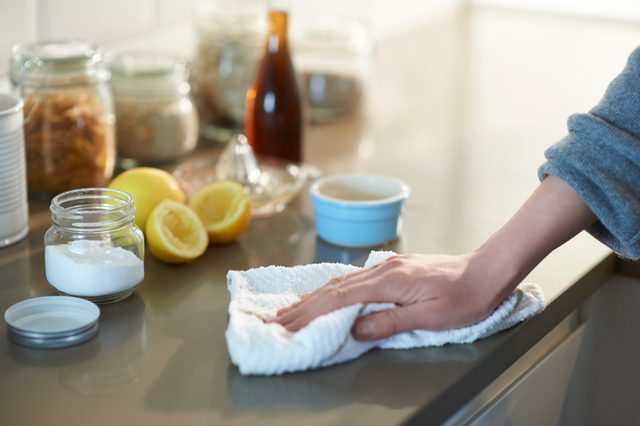
How long Covid-19 can remain infectious in your home
The virus that causes Covid-19 is mainly spread through respiratory droplets produced when an infected person coughs or sneezes. However, it’s possible to become infected by touching a surface or object with the virus on it, and then touching your mouth, nose, or eyes, according to the Centers For Disease Control and Prevention (CDC). Why? Viruses are tenacious and can survive on surfaces outside the human body. Exactly how long they can remain infectious depends on the type of surface and the environmental conditions. In a lab, the virus remained active on plastic and metal surfaces for two to three days and 24 hours on cardboard and paper, according to a study published in The New England Journal of Medicine. (Keep your air clean with one of these air purifiers for viruses too.)
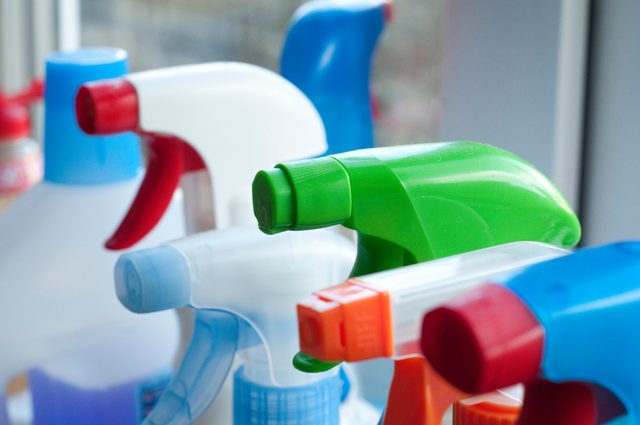
Pick the right cleaning products
Antibacterial cleaners are ineffective against viruses and even cleaners that claim to kill most germs can miss Covid-19, the CDC cautions. So when choosing wipes or sprays to disinfect items that may be contaminated with Covid-19, it’s important to choose an EPA-registered disinfectant product. The CDC recommends daily disinfecting of “high touch” surfaces including tables, doorknobs, light switches, countertops, handles, desks, phones, keyboards, toilets, faucets, and sinks. Here’s a look at other items you should consider.

Remote control
Remote controls are notoriously dirty, harboring viruses and other germs on the surface and in the nooks and crannies, says Philip M. Tierno, PhD, a microbiologist and immunologist at New York University Langone Medical Center and the author of The Secret Life of Germs. Every person who touches the clicker will be at risk of infection. You can use disinfectant wipes to do a quick clean but because it’s hard to get inside all the cracks, Tierno suggests using a plastic, disposable remote sleeve that can be changed often. Here are 10 more germ-spreading habits you should give up.
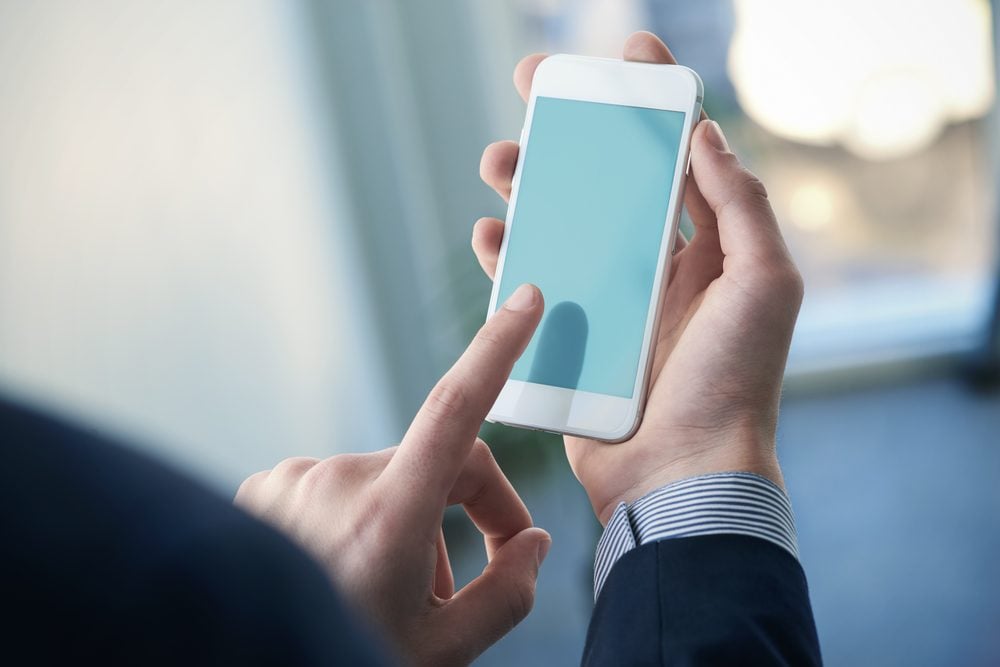
Phone
Your smartphone is a germ hazard on a typical day. When you’re sick, however, it’s nearly toxic. Indeed, phones can carry many types of pathogens and bacteria, that could make you ill, according to a study published in the Iranian Journal of Microbiology. If you handle your phone regularly while you’re sick, you might be leaving behind microscopic cells that you could pick back and share with others later. Because your phone is one of the most likely objects to become contaminated with Covid-19, the CDC recommends wiping it daily with a disinfecting wipe. If someone in your family is sick, don’t let them use—or touch—your phone.
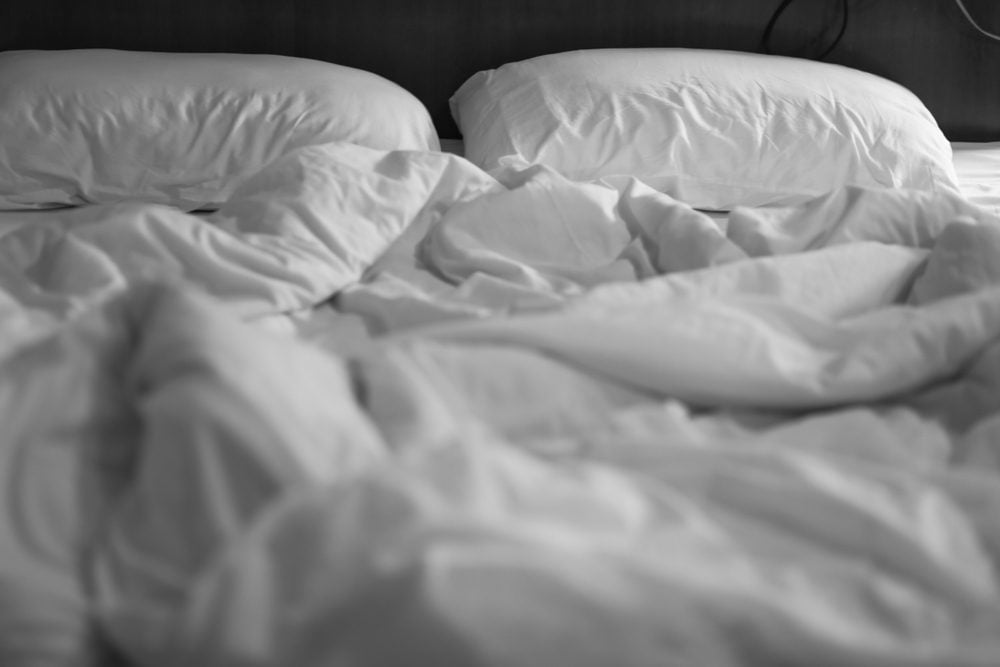
Sheets and pillowcases
Odds are that if you or your child has been sick with a virus, your pillowcases and sheets are contaminated. Viruses don’t live on soft surfaces as long as they do on hard surfaces, but they will linger. When the sick person feels better, it’s time to strip the bed and wash the sheets on the hottest setting possible, the CDC says. If your pillows are washable, they should also go through a cycle. If your pillows can’t be washed, set them aside for a few days to let any leftover virus die off before putting them back on the bed. The CDC also recommends disinfecting your machine by cleaning your washer with bleach at least once a month. Make sure to disinfect clothing hampers as well. Here are important reasons to take the flu more seriously.
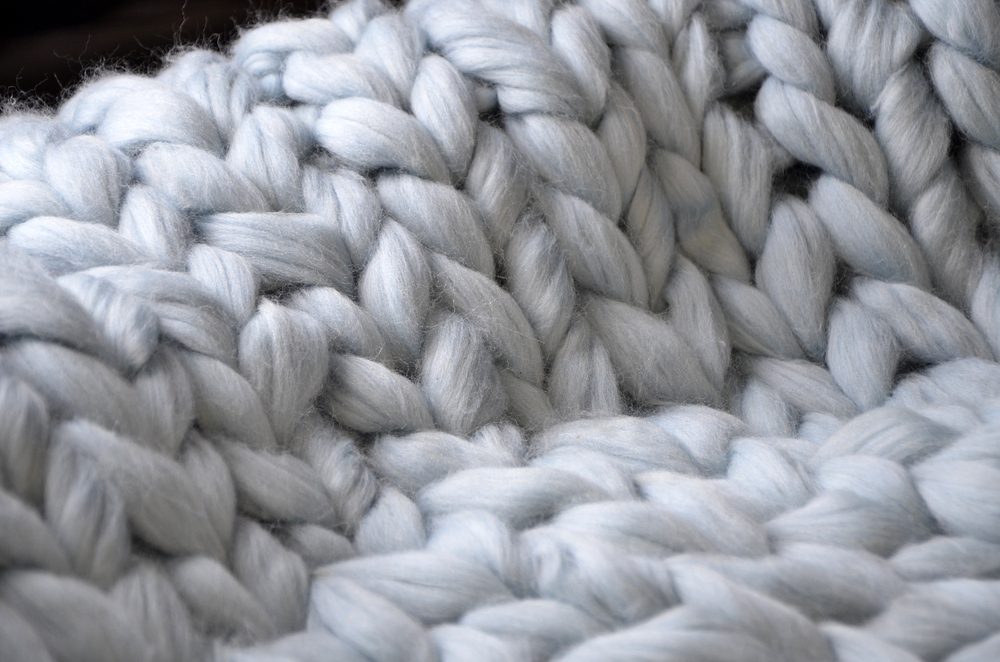
Blankets
A fever can leave you chilled and shaking, so you likely wrap up in blankets to keep warm while you’re coping. Those blankets need a hot bath once you’re better. To disinfect blankets, follow the same advice for sheets and pillows. Wash in the hottest water possible and add a color-safe bleach. A hot dryer cycle will also help kill any flu germs that remain. Another option: Put the blankets in a bag and leave them for at least 24 to 48 hours (longer is better) to let the virus die. Check out why a fever makes you feel cold.
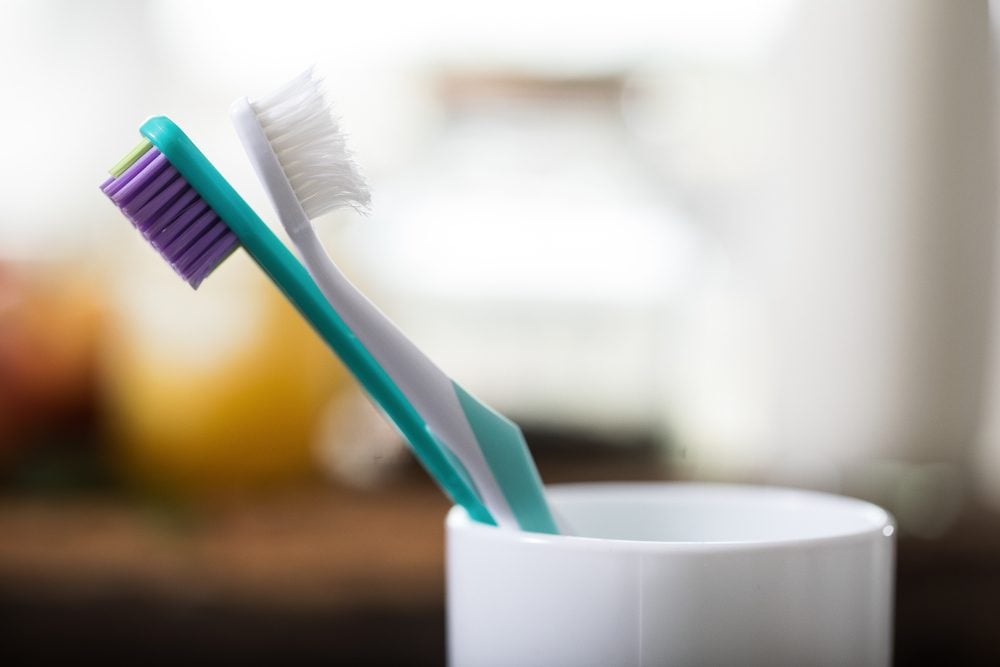
Toothbrush
Yep, your toothbrush is now harboring viruses. Like other hard surfaces, viruses can live on a toothbrush (the bristles or the handle) for 24 hours, according to a study published in Nursing Research and Practice. The American Dental Association recommends using a UV lightbox for disinfecting if your brush came with one or you can put your toothbrush in an antiseptic mouthwash and leave it for several minutes. You can also just buy a new one. Toothbrushes should be replaced about every three months.
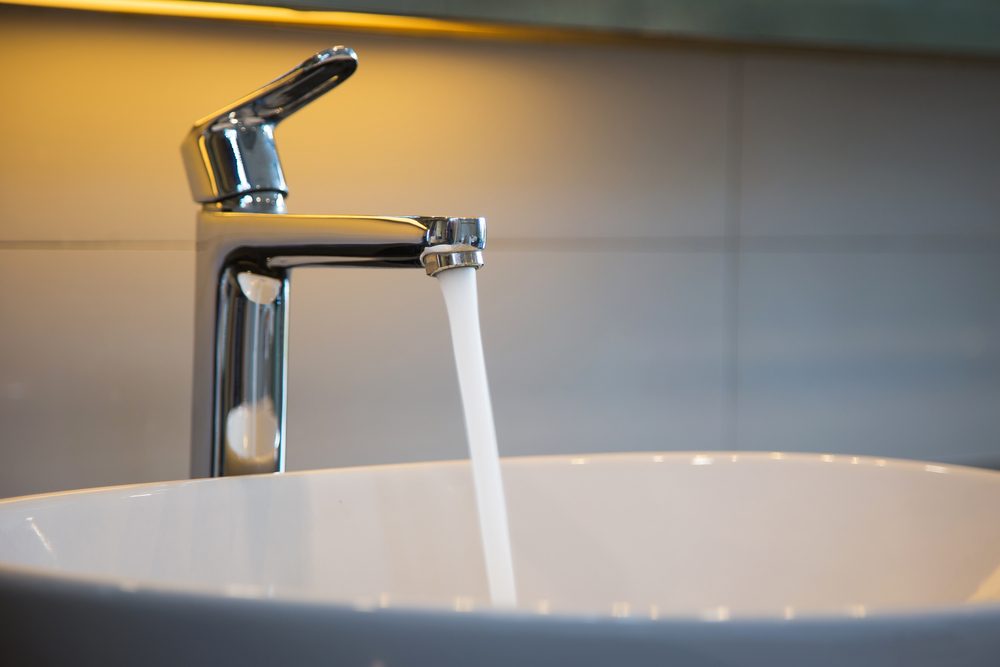
Bathroom
While you’re in the bathroom, take a look around. Viruses can make a biohazard site out of your bathroom, Dr. Khoury says. Used tissues, saliva on the sink, and infected hands leaving the virus on faucet and toilet handles. Take a minute to wipe down everything with an EPA-approved disinfectant and dispose of any tissues yourself that may have missed the wastebasket.
If you don’t have access to one of the cleaners on the EPA’s list, ethyl alcohol (at least 70 percent strength) is very effective against viruses. Diluted bleach is also a good cleaner. Spray your cleanser on surfaces and let them dry. The chemicals should kill lingering pathogens within an hour.

Stuffed animals
Mr. Cuddles may have comforted your child while she felt ill, but like other soft surfaces, the animal is now a vector for the virus. If stuffed animals can be washed and dried on hot settings, give them a bath, the CDC says. If they can’t handle a wash cycle, the animals can “hibernate” for a few days—that will be enough time for the germs to die off.
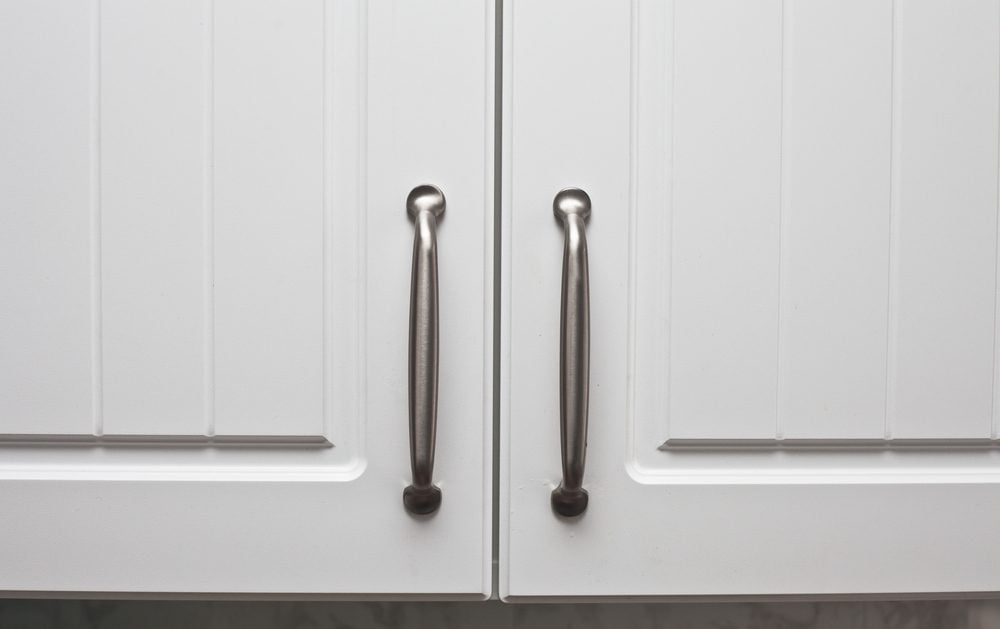
Kitchen
Everybody makes a trip through the kitchen, which makes it Ground Zero for passing around the flu. Wipe down all surfaces—especially handles and doors—to kill any lingering viruses, Tierno says. Run dishcloths through the hot cycle on your washing machine. Replace dish sponges often (or don’t use sponges at all as they are harder to disinfect), he says. It’s also a good idea to quickly wipe down any food containers in cupboards that the ill person may have handled.
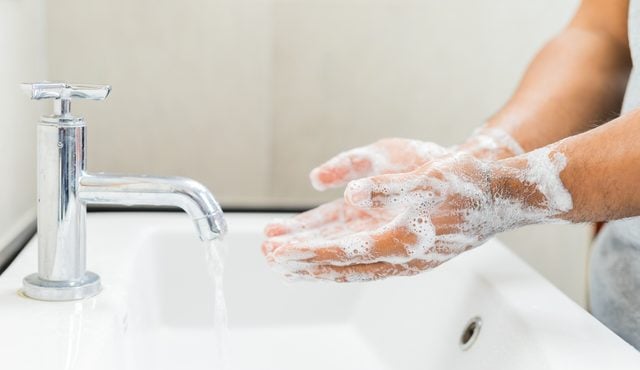
Your hands, one more time
The fastest way to get sick is to touch an infected surface and then rub your eyes, scratch your nose, or wipe your mouth, according to the National Institutes of Health. Your hands can pick up the flu virus anywhere. When you touch your face, it’s the same as putting out a welcome mat for illness. Whether you’re caring for an ill loved one or recovering yourself, keep washing your hands with warm water and soap—and skip the antibacterial type, Dr. Khoury says. Just make sure you aren’t making one of these handwashing mistakes.

